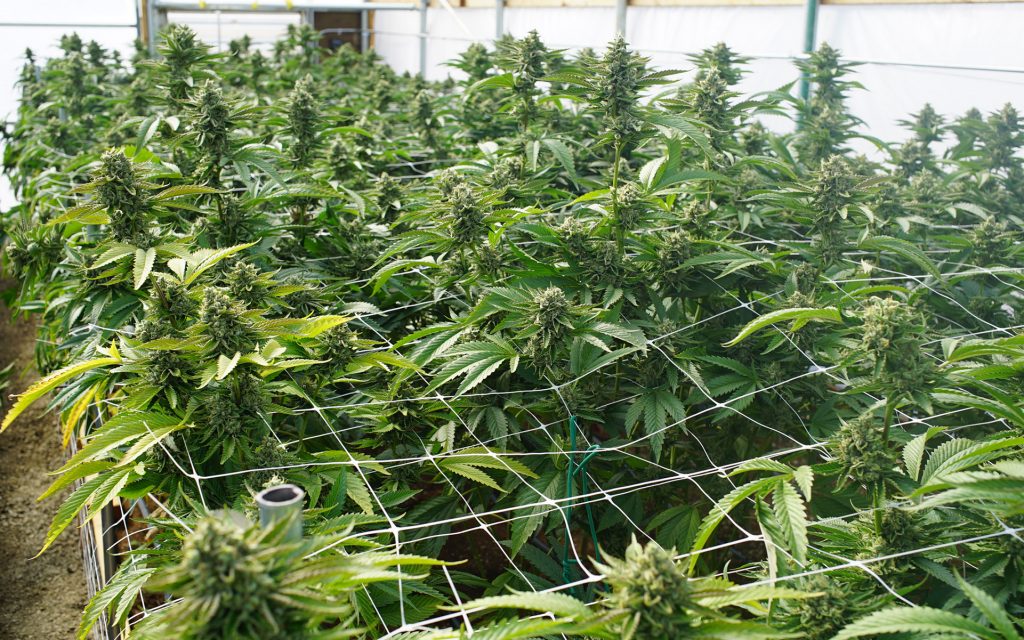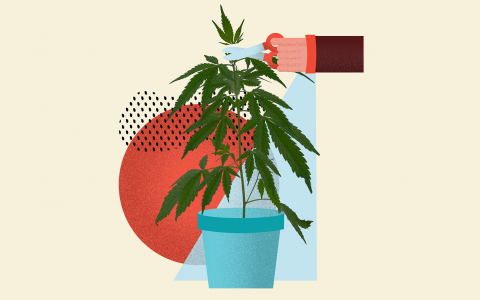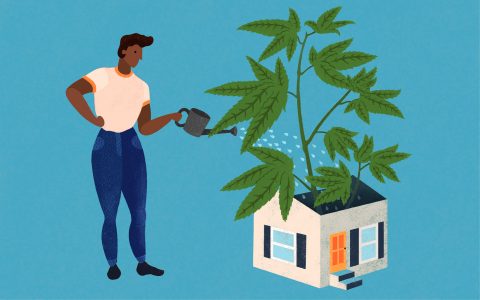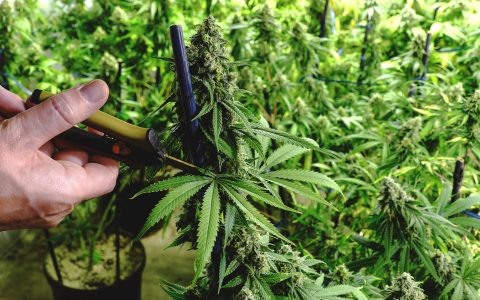Even if you haven’t grown cannabis, you’ve likely seen pictures of cannabis crops, both indoor and outdoor, with bug buds growing up through a nylon screen. This screen is called a scrog, short for “screen of green.”
Scrogging will improve the quality of your cannabis plants and increase yields. There’s an art to putting a set of plants together and stretching out their limbs so they don’t grow on top of each other or shade each other out, but we’ll demystify the process.
Keep in mind that each plant is different and there’s no specific measurement for how close or far apart each plant or branch should be. Scrogging involves reading a plant to see what it needs and usually involves some fine-tuning. But with a little time and patience, your plants will be healthy and lush.
Why Scrog Your Cannabis?
Put on during the flowering stage or right before it, a scrog has a few main functions:
- It stretches out branches to expose more nodes to direct light, thereby increasing your yield.
- Stretching branches out increases the airflow through a plant, helping to prevent bud rot.
- A scrog adds support to branches so they won’t flop over or break as buds get bigger.
All of the branches above the screen will fill out with thick buds and most of the foliage below the screen will get shaded out. You want to prune these bottom branches and dead leaves because they either won’t produce buds or will produce subpar buds. You’ll get the most out of your plant if you can redirect resources from those branches to the quality buds above the screen.
Setting Up
To start, pick a set of plants, ideally of the same height and size. It’s hard to scrog plants of different sizes because the screen needs to be level across the whole canopy in order for light to distribute evenly.
Nylon screens come in different mesh sizes, usually 4-6” square. For a smaller grow, try a 4” mesh.
When Your Plants Don’t Have to Move
Scrogging is easier when your plants stay in one spot throughout their entire life, from vegetative stage to flowering, but depending on your setup, you might have to move them.
In this situation, you can just set the screen (more below) after you’ve done all of your topping and let the plants grow into it. You’ll have to touch up the screen a few times over the coming weeks to make sure branches are spaced out evenly and not too crowded.
When Plants Have to Move Into a Flowering Space
Make sure your plants are in their final place because you won’t be able to move them once under the screen. Plants also need to be transplanted to the appropriate size of pot.
 A scrog over an outdoor cannabis crop. (SEASTOCK/iStock)
A scrog over an outdoor cannabis crop. (SEASTOCK/iStock)
Plant Placement and Spacing
Plants need to be placed so they aren’t crowded, but not so far away that there are big gaps in the canopy. You do want some space in between plant branches when they are pulled up through the scrog—plants will still grow and fill in a little bit because they have at least eight weeks to go through the flowering cycle.
Plants need to be placed so they aren’t crowded, but not so far away that there will be big gaps in the canopy.
As a guideline, for a 4’ x 8’ tray, try putting in 18 or 21 plants in 5-gallon pots. That would give you three rows of either six or seven plants and should give you a sense of how many plants will fit together. You can adjust accordingly, based on tray and pot size.
Once all plants are in place, it can help to fold the branches back a little bit to get them ready for the screen. Be careful during this step! It’s easy to snap branches.
Fold branches out and away from the main stem, like a flower opening up or peeling a banana. Also keep in mind that some strains are sturdier than others and can withstand more bending.
Stretching the Screen
You’ll need at least four points of contact to put the screen on. Most growers will use a vertical extension that can withstand some force, like a two-by-four or a T-post, at each edge of the canopy.
There are two ways to put on a screen:
- Place each corner of the screen on one post at a time, stretching the screen as you go.
- Put the screen on all four contact points somewhat loosely and tighten it down later.
After the screen is on, shimmy it down until it’s on top of the plants. Ideally, you want the screen about 6-9” above the lowest branching of the plants—this is the first topping you gave the plant and the first point at which the plant starts branching, after the stem comes out of the soil.
Once the screen is set in place, make sure it’s tight, especially the edges. The tighter it is, the more it will be able to hold shape and hold the weight of developing buds. Zip ties come in handy here.
You can grab a part of the screen and pull it back and zip tie it to a post to tighten it up. Each point should be tighten about the same amount, so that the screen doesn’t come out lopsided. Be careful not to pull the screen too tight, as it might snap.
Placing Branches
At the end of the day, the branches in the screen should interlock with the branches of all the other plants around it. Think of spreading out your hands and putting the fingers of one hand in between the fingers of your other hand.
An important question to ask before putting branches into the scrog is: Where does the branch want to go? If a branch doesn’t want to stay where you put it, you might need to place it somewhere else. Don’t force it.
Try to fill each square mesh of the screen with a single branch—avoid putting two branches in one square and try not to leave a square empty. This will ensure that each branch gets enough space and light and that the screen is utilized to its maximum potential. You may not be able to do these depending on how much plant material you have, but they are good guidelines to follow.
An important question to ask before putting branches into the scrog is: Where does the branch want to go?
Stretch a branch out as far as it can go, pull it up through the screen, and rest it on the screen. If it falls through, pull it back one mesh closer to the main stem of the plant.
A good place to start on the scrog is a corner, at one of the posts. Work your way down one of the edges to the next post, and then do another edge until all edges are filled in, then work on the middle.
Work methodically, putting the branches of one plant into the screen before moving on to the next plant.
If you’re having trouble with a certain branch, one trick is to rotate the entire plant—by grabbing the pot and turning it—so that the branch in question is now facing where you want it to go.
After you’re done, it’s a good idea to look below the screen to make sure you didn’t miss any branches. If so, just pop them back in the screen.
Maintenance
Scrogging can stress a plant out, stretching all of its branches around. You’ll probably notice that your plants look a little wilty, or like they “took a hit” after doing it. But fear not—under some direct light, they’ll bounce back, and putting them through the scrog will be worth it in the long run.
It’s a good idea to water your plants within 24 hours of scrogging them, just to give them a little boost to pass the stress of the procedure.
It’s also a good idea to check the scrog 2-3 days later to touch it up. The plants will have grown into the screen a little bit in those couple of days, and you’ll have a better sense of where each branch wants to go and where all the buds will develop.
Above the screen, a beautiful canopy of buds will develop and fill in. But because the canopy becomes thick with buds, anything underneath the screen will get shaded out and most likely die. It’s important to clean up dead leaves and prune small branches that don’t receive light under the screen.
These branches may start developing buds, but they won’t be worth your time and effort. It’s better to get rid of them and have the plant redirect resources to the buds above the screen, making those better and more vibrant.




















